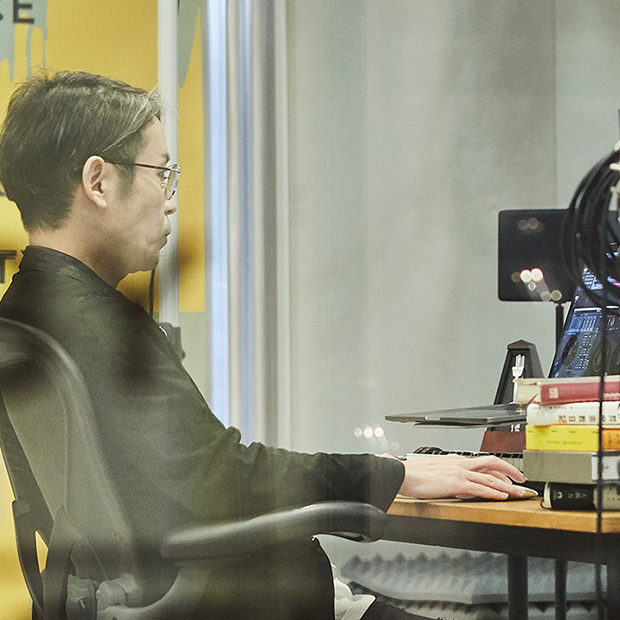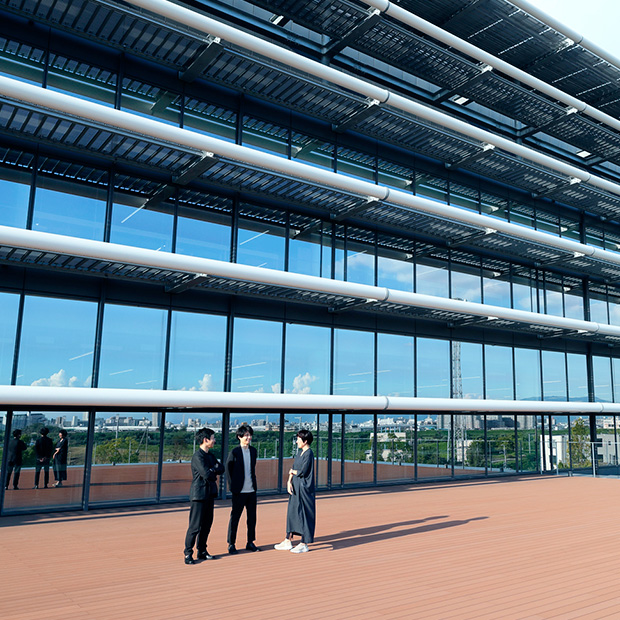“Food creation” as managed by artist Ayako Suwa, is an activity that creates various experiences and conveys a specific concept through installations and performance using food as a theme. As part of this activity, she has held a variety of programs both inside and outside Japan, including “conceptual catering” and “guerrilla restaurants” performed at unique venues. In this interview, we asked Suwa on her thoughts about the nature of air and its close relationship with “food.”

“While air can be interpreted in various ways, the food experience that I produce, broadly speaking, also creates an atmosphere. “Food creation” does not have an enduring physical presence, but it does continue to live in the minds of the people who have experienced it. Savoring the taste is included within that, but food disappears once eaten. Not only the sense of taste, other sensory experiences such as smell, touch, temperature, and air direction are also invisible. However, those invisible things that disappear are full of possibilities to become forever engraved into our memories. For me, ‘air’ represents the situation and story of these invisible experiences that I try to create through my artwork.”
An atelier in a forest at the base of Mt. Fuji
In the summer of 2019, Suwa established an atelier in a forest at the base of Mt. Fuji in Yamanashi Prefecture, and now she frequently travels between Yamanashi and Tokyo for her creative activities. By a strange coincidence, that lifestyle has helped her spend a peaceful time during the COVID-19 pandemic.
“I was looking for an atelier in Tokyo, but I could not find a good one. At some point, I came up with an idea that working in a forest would be great. Today, we can work from anywhere with Internet access. When I tried searching for a property in a forest, I found this place. I visited the property the next day and immediately decided to make it my atelier. Because I grew up around nature, I wanted to do my creative work in this type of environment one day.
All the area you can see from here is part of the atelier property, and unless I go outside the premises, I rarely see people. Instead, many creatures live here, and I sometimes see animals crossing a path and insects staring. Although I do not see them very often, I feel their presence and eyes on me. Hares jump, and deer leave many droppings. When I come back from Tokyo, I find holes dug by wild boars and notice unfamiliar smells. I guess that the forest is livelier when I am not here.
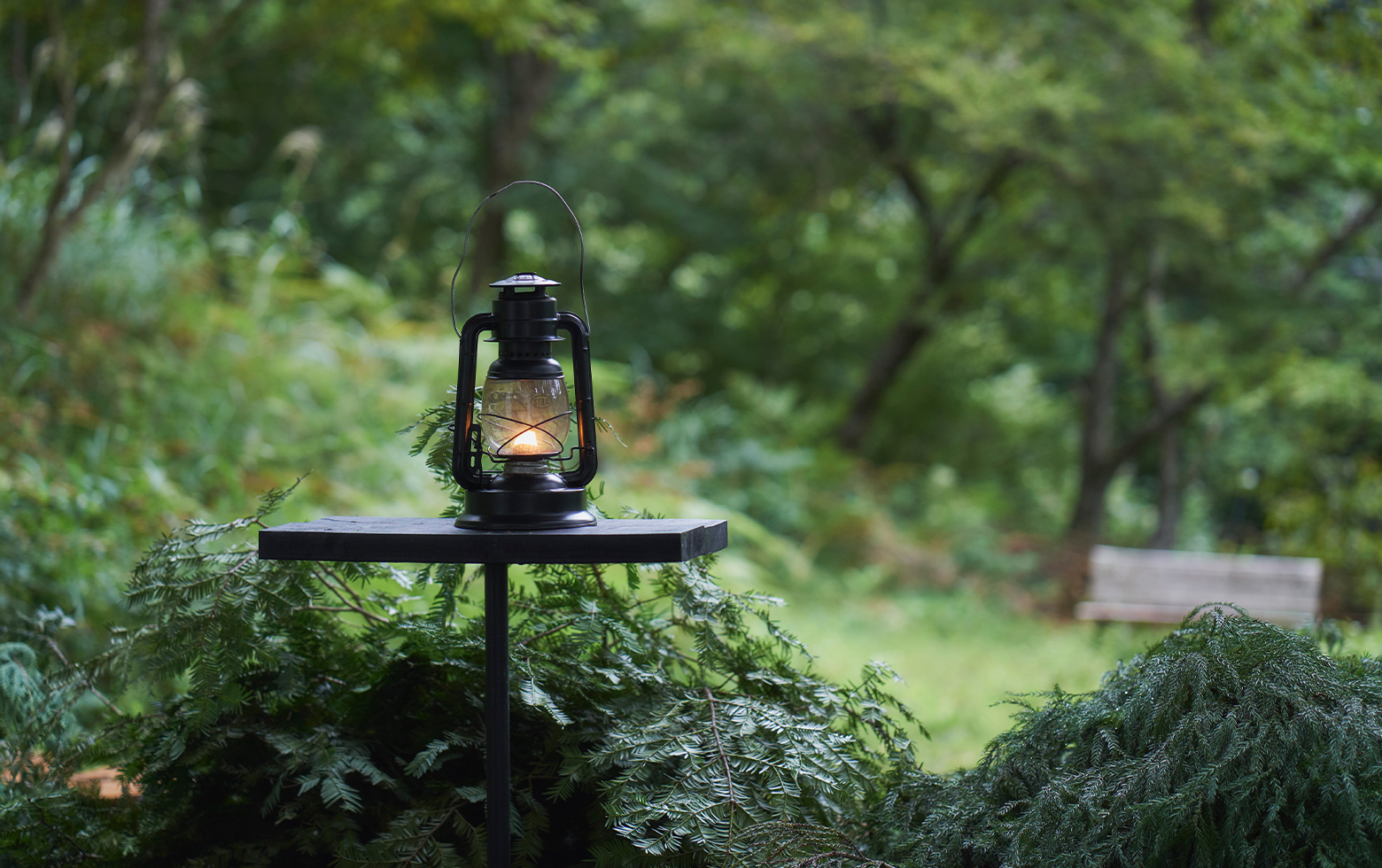
It is hard to explain what has changed since I came here, but I feel I am in the middle of a major change. That is partly because the significant change in the global situation coincided with the establishment of my atelier in the forest. Facing nature resulted in me having to face myself. Here I have encountered and communicated with types of people who I had never run into in Tokyo and found and learned many things that led me to new creations. Spending time in the forest has also significantly changed my thought process.”
“Freedom” of living at the mercy of nature
“While the spread of the new coronavirus forced people to suspend many projects, the forest is filled with inspiration, and every day is busy. Of course, urban cities like Tokyo provide us with inspiration and abundant information, but this area abounds with a completely different type of information that stimulates the senses. Emotions sway with the ever-changing light and wind as wild animals pose questions having no right answer. I feel that everyday life here further awakens my instincts.
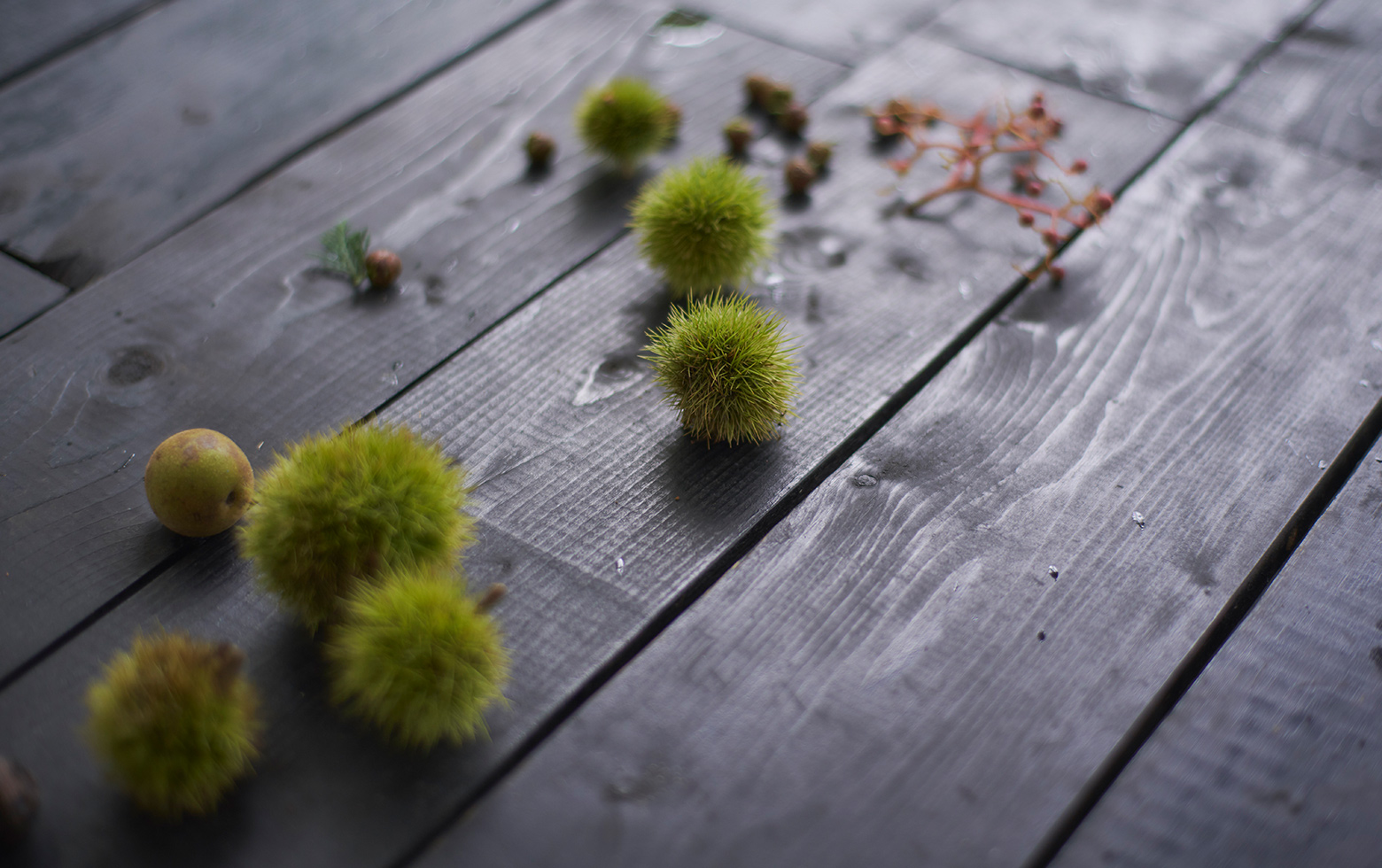
While the pandemic imposes unconventional restrictions and constraints in Tokyo, in this place, nature controls us. In the mountains, the weather does not proceed as forecast, and there are many unexpected surprises arising from that unpredictability. When being faced with unexpected events, we have to rely on our instincts. By doing so, our intuition is enhanced, and it may tell us, for example, ‘Looks like rain,’ ‘This place is dangerous,’ and ‘This one looks more interesting.’ Unlike life in Tokyo in which trains arrive on time and people keep appointments, things do not go as planned here. In the forest, we are at the mercy of nature and must let it take its course. The point is how beautifully we embrace it. Although I had unknowingly lost that feeling, it is an invaluable gift of freedom.”
A cycle of exchange created between the forest and Tokyo
In living around nature, Suwa has realized the value of a “cycle” that connects the urban city with the forest.
“When I walk in the forest, I find many branches and leaves of thinned trees. When I came here from Tokyo, they looked very beautiful. At the same time, I thought they were too beautiful to be abandoned. While the trunks of thinned trees are used as wooden materials and firewood, the branches and leaves are discarded. Some of them are left on the ground to return to the soil, whereas others are collected as industrial waste when there is a large quantity. So, I decided to make talismans (charms to dispel evil and bring good fortune) from these beautiful branches and leaves.
Plants contain a chemical substance called ‘phytoncide.’ It is a volatile, antibacterial substance emitted from stimulated plants to protect themselves. When you enter a forest, you may notice a pleasant aroma of the forest. It is the smell of phytoncide. It is proven to have a relaxing effect on people as well as immune-enhancing and antibacterial properties. Remembering that, I decided to send talismans made of branches and leaves containing a rich amount of phytoncides to my friends staying at home in Tokyo. I did it in April and May when people faced a shortage of alcohol-based hand sanitizers and masks due to the escalation of the pandemic. I wanted to bring the spirit of the forest to the people in urban areas suffering from stress because of the shelter-in-place orders and travel restrictions.

In return, my friends in Tokyo sent me wine and sweets that are hard to obtain in the forest. I gave these gifts to the local people who had told me how to split logs and how to cook edible wild plants as well as those who had given me branches and leaves of thinned woods, vegetables, and venison. Since I receive products from Tokyo that are hard to find in the forest as gifts in return for the talismans, I give back what I receive to the local people. Just like a barter system, an excellent cycle of exchange has been created between the urban city Tokyo and the forest with no need of money.”
A forest created in a building in Ginza, Tokyo
The cycle of exchange between the urban city and the forest was also reflected in Suwa’s artwork titled “Taste of Reminiscence, Delicacies from Nature: Ayako Suwa Exhibition,” which was held at the Shiseido Gallery until the end of September. The exhibition started in January 2020, but it was temporarily closed at the end of February due to the spread of the new coronavirus. In August, the exhibition was updated and reopened.
“During the government’s request to stay at home, everyone thought about what caused the situation. In particular, many people must have considered the relationship between nature and humanity. Through this exhibition, I wanted to convey my own questions about the coexistence of nature and human beings.
When resuming the exhibition, I brought talismans from the forest to the Shiseido Gallery. Because visitors came all the way to the exhibition despite the stress of wearing a mask and the risk of infection, I wanted to fill the gallery with the forest’s phytoncides emitted from the talismans and create a place for dispelling evil and achieving a sense of a catharsis. By creating a forest in Ginza, I wanted to boost visitor’s natural barriers with the power of nature.
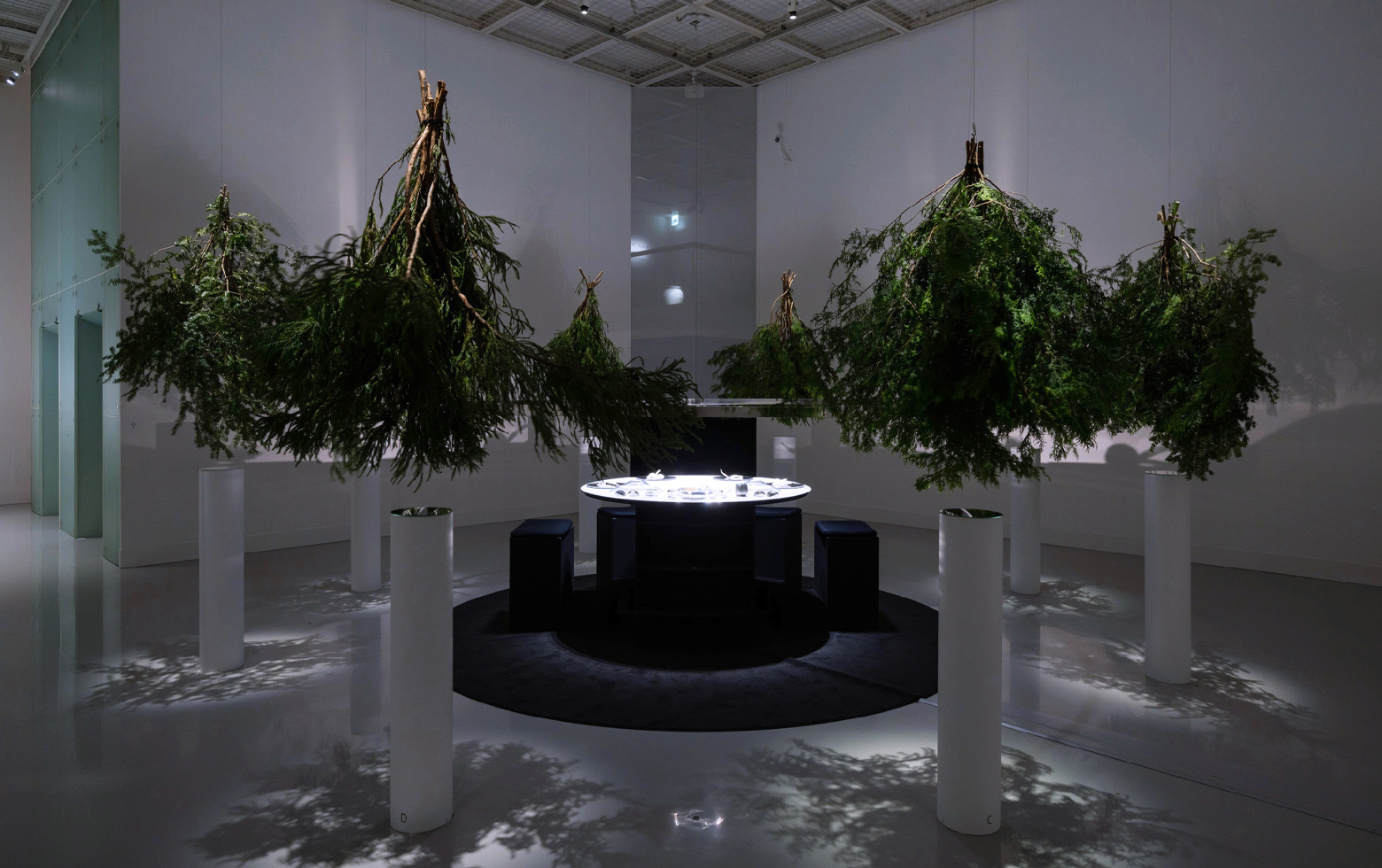
The ‘Taste of Reminiscence, Delicacies from Nature’ exhibition is an immersive art experience where viewers select and enjoy one type of smell that is closely associated with their memory as an ‘experience to savor yourself.’ Before the temporary closure, visitors could actually savor the taste by eating from the exhibit. Unfortunately, that option was no longer available after the reopening as a measure to prevent the spread of COVID-19. So, I modified the exhibit to one that could only be experienced with a mask. Viewers select an aromatic patch from several types of forest scents and attach it to their masks. By doing so, they can feel a sense of forests inside their masks every time they breathe. Even when they leave the gallery and are walking around Ginza or riding a crowded train on their way home, they experience the feeling of a forest for as long as they wear the mask. That forest is the one that dwells only in their own minds. In that sense, I created a feeling of air inside their masks. By bringing the air of forest, I created a forest in Ginza, in their masks, and in their memory.”

Changes in the relationship between food and humans
Suwa has engaged in food through her “Food creation” activities, and she predicts that the COVID-19 pandemic will change the relationship between food and humans.
“Through the pandemic, people realized many things in their respective positions. Among others, everyone needed to take a moment to think about ‘eating.’ Our values towards what, where, and with whom to eat have been changed. We will also become more conscious of producers and the place of production, as well as how our eating affects nature and society. My values towards true richness and happiness have been significantly changed over the last few months. A friend of mine sent me “The Blue Bird” written by Maurice Maeterlinck in return for a talisman, and the story gave me a beautiful answer.
While there are no supermarkets or convenience stores deep in the mountains, this place has luxuries that money cannot buy. One day, my dining table was filled with mountain stream ayu (sweetfish), venison, bamboo shoots, edible wild plants, fresh vegetables, and wild fruits. To my surprise, none of the food for dinner had been bought. All of the food was something received from my neighbors. Some of it was food that they had produced and shared with me, while some of it was given in return for my help, or in return for my return…
When experiencing such a beautiful cycle of exchange, I found true richness in my life. A mountain owner gives me logs left over from thinning work, people of the village tell me how to split these logs for firewood, and then I use the firewood to grill the venison that I have received from a hunter and eat it in the forest. Of course, the venison cooked by a chef in a restaurant at the perfect temperature would be delicious. However, living in nature makes me realize that there is something more than the physical experience of delicious taste.

I strongly believe that I am in the middle of a calm, major turning point. However, I am not sure yet what exactly it is. Many people may have the same feeling now. Nonetheless, having the two creative bases in this forest, and Tokyo is very good for me. Constantly having two perspectives of city and nature is necessary for me, particularly at this moment. In the exhibition at the Shiseido Gallery, I unexpectedly needed to present two types of artwork before and during the pandemic, but I am willing to embrace such a change and fully enjoy the freedom of being at the mercy of the situation. Now is the time for me to be committed to nature to build my future life. When the pandemic ends, I hope to see a new world and not just return to the world as it had been. The coronavirus causes great pain, but it also provides us with an opportunity to build a better world. I want to believe that the day will come when we don’t have to think of the virus as our enemy.”









